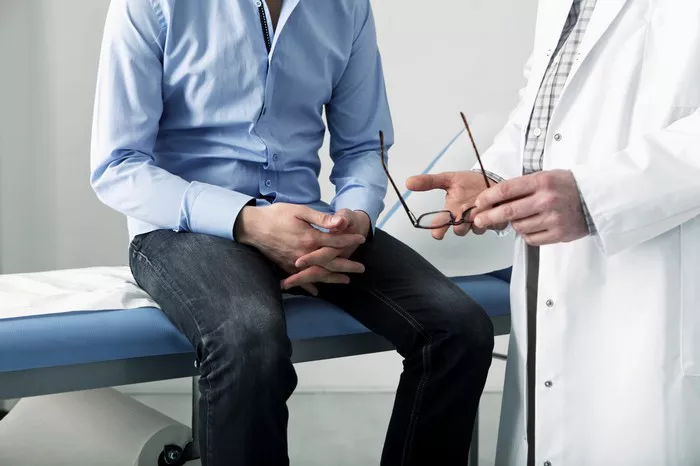Varicocele is a condition that affects many men, often without them realizing it. It occurs when the veins in the scrotum, known as the pampiniform plexus, become enlarged. This condition is similar to varicose veins that appear in the legs. While varicocele can cause discomfort, pain, and in some cases, fertility problems, many men wonder if this condition can develop suddenly. In this article, we will explore the causes of varicocele, how it develops, and whether it can appear suddenly. We will also discuss the potential risks and treatments for this condition.
What is Varicocele?
Varicocele refers to the enlargement of veins within the scrotum. The scrotum is a pouch that holds the testicles, and these veins are responsible for draining blood from the testicles. Under normal circumstances, the blood flows easily through these veins. However, when the valves in the veins fail to function properly, blood can pool, causing the veins to dilate. This is when varicocele develops.
While varicocele is relatively common, it often goes unnoticed because it may not cause significant pain or symptoms. It is most commonly found in men between the ages of 15 and 25, but it can occur at any age. Some men may only notice varicocele when it begins to affect fertility, while others may experience discomfort or pain in the scrotal area.
Can Varicocele Develop Suddenly?
The short answer to this question is yes. While varicocele can develop gradually over time, it is also possible for it to appear suddenly. This is particularly true in cases where the blood flow in the veins becomes obstructed or the valves inside the veins stop functioning properly. However, it is important to understand that in most cases, the development of varicocele is not immediate but happens over a period of time. Sudden cases of varicocele are often linked to other health conditions or physical changes that impact the veins.
Understanding the Process of Varicocele Development
Varicocele typically develops as a result of a malfunction in the valves of the veins in the scrotum. These valves are meant to regulate the flow of blood, preventing it from flowing backward. When these valves fail, blood starts to pool in the veins, causing them to expand and become enlarged. The veins in the scrotum are similar to veins in the legs, which is why the condition is sometimes compared to varicose veins.
Over time, the veins continue to enlarge, and the blood flow may become more restricted. This process can take years to develop and may not cause significant symptoms in the early stages. However, when varicocele suddenly becomes noticeable, it is often because of a specific change in the body that affects blood circulation in the scrotum. For example, changes in physical activity, weight lifting, or even hormonal imbalances can contribute to the sudden appearance of varicocele.
Physical Activities and Varicocele
Varicocele can sometimes appear suddenly after intense physical activity, such as heavy weight lifting or strenuous exercise. These activities can put a lot of pressure on the veins in the scrotum, causing the veins to enlarge quickly. This can lead to discomfort or a noticeable lump in the scrotum. While these activities may not cause varicocele directly, they can certainly exacerbate existing conditions or cause the veins to become more engorged.
If you suddenly experience pain or swelling in the scrotum after engaging in physical activity, it could be an indication that varicocele has developed or worsened. In such cases, it is important to seek medical advice to determine the cause of the symptoms and evaluate whether varicocele is present.
Hormonal Changes and Varicocele
Hormonal imbalances can also play a role in the sudden development of varicocele. The condition is more common in men with low testosterone levels, as testosterone helps regulate the veins in the scrotum. When testosterone levels decrease or fluctuate significantly, it can lead to changes in the blood flow and the enlargement of veins.
In some cases, hormonal changes may occur suddenly due to health conditions, aging, or lifestyle factors. If you notice sudden changes in your scrotal area or experience discomfort, it is important to speak with a doctor to rule out any underlying hormonal issues.
Medical Conditions That Contribute to Sudden Varicocele Development
Certain medical conditions may increase the risk of developing varicocele suddenly. For example, an abdominal tumor, kidney issues, or a problem with the vascular system can put pressure on the veins in the scrotum, leading to varicocele. These conditions can affect the blood flow, making it harder for the veins to function properly.
If you have a known medical condition that affects your blood circulation or your kidneys, it is important to monitor any changes in your scrotal area. Sudden swelling, pain, or discomfort may be an indication that varicocele has developed or worsened.
Symptoms of Sudden Varicocele
When varicocele develops suddenly, you may experience some or all of the following symptoms:
- Swelling or lump in the scrotum
- Pain or discomfort in the scrotal area, especially after physical activity
- A feeling of heaviness or fullness in the scrotum
- Changes in the appearance of the scrotum, such as visible veins or a “bag of worms” feeling
- Infertility or difficulty in conceiving, if varicocele affects sperm production
If you experience any of these symptoms suddenly, it is essential to seek medical attention promptly. A doctor will be able to evaluate your condition and determine whether varicocele is the cause of your symptoms.
How is Varicocele Diagnosed?
To diagnose varicocele, a doctor will perform a physical examination and may ask about your medical history and any symptoms you are experiencing. The doctor will feel the scrotum for any abnormalities, such as enlarged veins or lumps. In some cases, additional tests may be required to confirm the diagnosis.
Ultrasound imaging is often used to get a clear view of the veins in the scrotum and determine the extent of the varicocele. This non-invasive test uses sound waves to create an image of the veins and detect any blood flow abnormalities. In rare cases, a doctor may recommend further diagnostic tests, such as a venogram, to assess the veins more closely.
Treatment Options for Varicocele
While varicocele may not always require treatment, it can be managed through various methods. Treatment is typically recommended if the condition causes pain or fertility issues. Some of the most common treatments include:
Lifestyle Modifications
For mild cases of varicocele, making lifestyle changes may help manage symptoms. Avoiding activities that put pressure on the scrotum, wearing supportive underwear, and managing pain with over-the-counter medications can help reduce discomfort. Regular exercise and a healthy diet can also promote better circulation.
Surgical Intervention
In more severe cases, surgery may be necessary to treat varicocele. The most common procedure is called varicocelectomy, which involves removing or tying off the enlarged veins to improve blood flow. This surgery is typically done under general anesthesia and has a high success rate in relieving symptoms and improving fertility.
Conclusion
While varicocele is often a gradual condition, it is possible for it to develop suddenly due to physical activity, hormonal changes, or underlying medical conditions. If you experience sudden pain, swelling, or discomfort in the scrotum, it is important to consult a healthcare provider to determine whether varicocele is the cause. Early detection and treatment can help prevent complications and improve your quality of life. By understanding the factors that contribute to varicocele development, you can make informed decisions about your health and seek the appropriate treatment if needed.
Related topics:
Can a Varicocele Cause Back Pain?


























